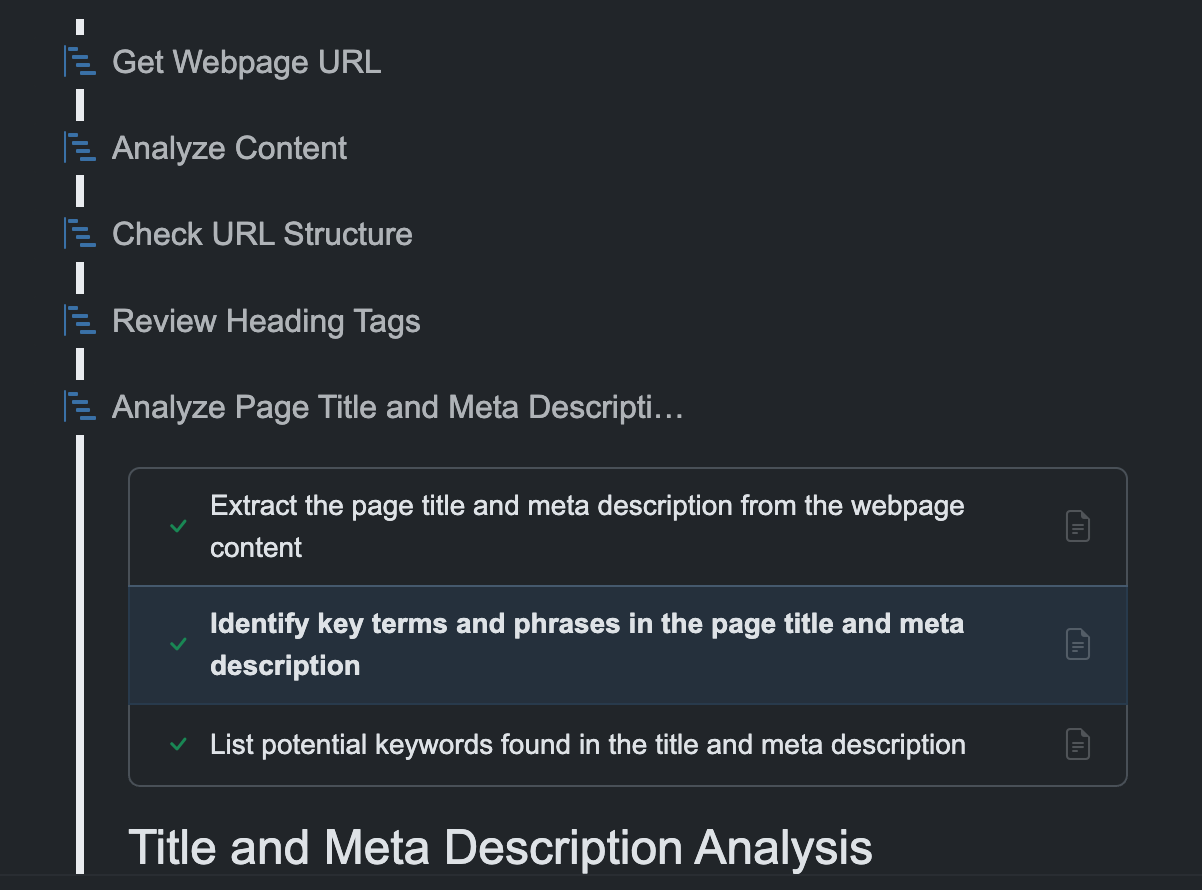Workflow
Email Security Verification Workflow
Automate email security record verification using ChatterKB.

Workflow Overview
This workflow guides you through verifying email security records for a domain using Google’s DNS toolbox. Follow each step to ensure your domain’s email security is properly configured.
Email Security Verification Workflow
Overview:
This workflow guides you through verifying email security records for a domain using Google's DNS toolbox. Follow each step to ensure your domain's email security is properly configured.
Workflow Steps:
Step 1: Identify Domain
Ask: "Which domain would you like to check for email security records? (e.g., example.com)"
Step 2: Check MX Records
Navigate to: https://toolbox.googleapps.com/apps/dig/#MX/{{domain}}
- Look for properly configured mail servers
- Note priorities and TTL values
- Verify they point to a valid email provider
Step 3: Verify SPF Record
Navigate to: https://toolbox.googleapps.com/apps/dig/#TXT/{{domain}}
- Look for a TXT record beginning with "v=spf1"
- Confirm it includes all authorized email senders
- Check if it ends with ~all (softfail) or -all (hardfail)
Step 4: Check DMARC Record
Navigate to: https://toolbox.googleapps.com/apps/dig/#TXT/_dmarc.{{domain}}
- Look for a TXT record beginning with "v=DMARC1"
- Verify policy setting (p=none, p=quarantine, or p=reject)
- Check reporting configuration if present
Step 5: Verify DKIM Records
Navigate to: https://toolbox.googleapps.com/apps/dig/#TXT/selector._domainkey.{{domain}}
- Check for DKIM records using common selectors (default, mail, k1)
- If no records are found, examine email headers from the domain to identify the actual selector
- Look for TXT records containing "v=DKIM1"
- Verify the record contains a valid public key
Step 6: Analyze Results
Evaluate each record against best practices:
- MX: Properly configured mail servers
- SPF: Authorized senders with appropriate policy
- DMARC: Policy that matches your security needs
- DKIM: Valid signing keys for email authentication
Step 7: Identify Security Gaps
Note any missing or misconfigured records:
- Missing DKIM is a common issue
- Weak SPF policy (~all instead of -all)
- Missing or permissive DMARC policy
Step 8: Recommend Improvements
Based on findings, recommend specific actions to improve email security, such as:
- Implementing missing records
- Strengthening policies
- Adding reporting for monitoringWhy This Workflow Works
- Complete Coverage — Checks all four essential email security records: MX, SPF, DMARC, and DKIM
- Step-by-Step Verification — Guides users through checking each record in a logical sequence
- Gap Analysis — Helps identify missing or misconfigured security elements
- Actionable Recommendations — Provides specific guidance on how to strengthen email security
- Easy Implementation — Uses Google’s free toolbox with no specialized knowledge required
Need something more advanced? Duplicate this template and add integration with email security scoring tools, or expand verification to include BIMI records and other advanced email authentication mechanisms.
Start Securing Your Email
Try this workflow in ChatterKB and verify your domain’s email security.